BMW 2008 Annual Report Download - page 190
Download and view the complete annual report
Please find page 190 of the 2008 BMW annual report below. You can navigate through the pages in the report by either clicking on the pages listed below, or by using the keyword search tool below to find specific information within the annual report.-
 1
1 -
 2
2 -
 3
3 -
 4
4 -
 5
5 -
 6
6 -
 7
7 -
 8
8 -
 9
9 -
 10
10 -
 11
11 -
 12
12 -
 13
13 -
 14
14 -
 15
15 -
 16
16 -
 17
17 -
 18
18 -
 19
19 -
 20
20 -
 21
21 -
 22
22 -
 23
23 -
 24
24 -
 25
25 -
 26
26 -
 27
27 -
 28
28 -
 29
29 -
 30
30 -
 31
31 -
 32
32 -
 33
33 -
 34
34 -
 35
35 -
 36
36 -
 37
37 -
 38
38 -
 39
39 -
 40
40 -
 41
41 -
 42
42 -
 43
43 -
 44
44 -
 45
45 -
 46
46 -
 47
47 -
 48
48 -
 49
49 -
 50
50 -
 51
51 -
 52
52 -
 53
53 -
 54
54 -
 55
55 -
 56
56 -
 57
57 -
 58
58 -
 59
59 -
 60
60 -
 61
61 -
 62
62 -
 63
63 -
 64
64 -
 65
65 -
 66
66 -
 67
67 -
 68
68 -
 69
69 -
 70
70 -
 71
71 -
 72
72 -
 73
73 -
 74
74 -
 75
75 -
 76
76 -
 77
77 -
 78
78 -
 79
79 -
 80
80 -
 81
81 -
 82
82 -
 83
83 -
 84
84 -
 85
85 -
 86
86 -
 87
87 -
 88
88 -
 89
89 -
 90
90 -
 91
91 -
 92
92 -
 93
93 -
 94
94 -
 95
95 -
 96
96 -
 97
97 -
 98
98 -
 99
99 -
 100
100 -
 101
101 -
 102
102 -
 103
103 -
 104
104 -
 105
105 -
 106
106 -
 107
107 -
 108
108 -
 109
109 -
 110
110 -
 111
111 -
 112
112 -
 113
113 -
 114
114 -
 115
115 -
 116
116 -
 117
117 -
 118
118 -
 119
119 -
 120
120 -
 121
121 -
 122
122 -
 123
123 -
 124
124 -
 125
125 -
 126
126 -
 127
127 -
 128
128 -
 129
129 -
 130
130 -
 131
131 -
 132
132 -
 133
133 -
 134
134 -
 135
135 -
 136
136 -
 137
137 -
 138
138 -
 139
139 -
 140
140 -
 141
141 -
 142
142 -
 143
143 -
 144
144 -
 145
145 -
 146
146 -
 147
147 -
 148
148 -
 149
149 -
 150
150 -
 151
151 -
 152
152 -
 153
153 -
 154
154 -
 155
155 -
 156
156 -
 157
157 -
 158
158 -
 159
159 -
 160
160 -
 161
161 -
 162
162 -
 163
163 -
 164
164 -
 165
165 -
 166
166 -
 167
167 -
 168
168 -
 169
169 -
 170
170 -
 171
171 -
 172
172 -
 173
173 -
 174
174 -
 175
175 -
 176
176 -
 177
177 -
 178
178 -
 179
179 -
 180
180 -
 181
181 -
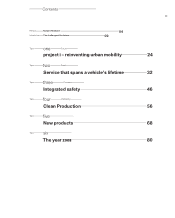 182
182 -
 183
183 -
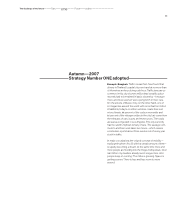 184
184 -
 185
185 -
 186
186 -
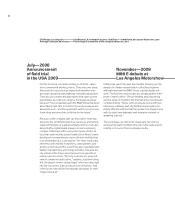 187
187 -
 188
188 -
 189
189 -
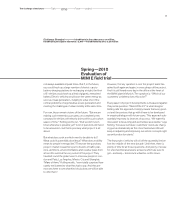 190
190 -
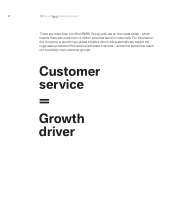 191
191 -
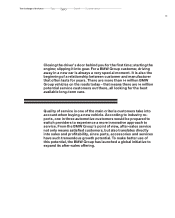 192
192 -
 193
193 -
 194
194 -
 195
195 -
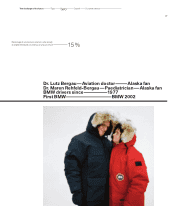 196
196 -
 197
197 -
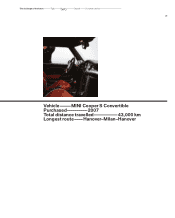 198
198 -
 199
199 -
 200
200 -
 201
201 -
 202
202 -
 203
203 -
 204
204 -
 205
205 -
 206
206 -
 207
207 -
 208
208 -
 209
209 -
 210
210 -
 211
211 -
 212
212 -
 213
213 -
 214
214 -
 215
215 -
 216
216 -
 217
217 -
 218
218 -
 219
219 -
 220
220 -
 221
221 -
 222
222 -
 223
223 -
 224
224 -
 225
225 -
 226
226 -
 227
227 -
 228
228 -
 229
229 -
 230
230 -
 231
231 -
 232
232 -
 233
233 -
 234
234 -
 235
235 -
 236
236 -
 237
237 -
 238
238 -
 239
239 -
 240
240 -
 241
241 -
 242
242 -
 243
243 -
 244
244 -
 245
245 -
 246
246 -
 247
247 -
 248
248 -
 249
249
 |
 |

31
not always available at peak times. But if, in the future,
you could hook up a large number of electric cars to
battery-charging stations for recharging at night, the fleet
of E-
vehicles would work as a kind of gigantic, networked
battery.
Electric vehicles would store the green energy as
soon as it was generated – helping to solve one of the
central
problems of regenerative power generation and
meeting the challenges of urban mobility at the same time.
For now, those remain visions of the future. “But we are
making such tremendous progress on completely new
concepts for vehicles with electric drives within such a short
space of time,” Kolling points out, “that we don’t even
know what else is possible yet!” A lot of questions still need
to be answered – but that is precisely what project i is all
about.
But what does such a vehicle need to be able to do?
What could it potentially do without? What does mobility
mean for people in megacities? These are the questions
project i market researchers put to dozens of traffic plan-
ners, architects, environmentalists and creative types from
all over the world at the very outset of the project. They
travelled round the globe twice to interview people in Lon-
don and Paris, Los Angeles, Mexico City and Shanghai.
“Many of them,” Kolling recalls, “were totally surprised how
openly we listened to what they had to say. And they are
now very keen to see what kind of solutions we will be able
to offer them.”
However, the key question is one the project team has
asked itself again and again, in every phase of the project.
And it is still heard every day in the office at the heart of
the BMW plant in Munich. The question is: “Which of our
customers’ problems does this solve?”
Every aspect of project i developments is measured against
this pivotal question. “Need-Offer-Fit” is what designer
Kolling calls this approach. It simply means that every prod-
uct and the services that go with it have to be developed
in ongoing dialogue with future users. This approach sub-
stantially improves its chances of success. “We want this
discussion to be as long and as intensive as possible,” says
Kolling, “because our future customers’ needs are chang-
ing just as dramatically as the cities themselves: We will
keep on adjusting and improving our vehicle concepts right
up until production starts.”
The first project i vehicles will roll off the assembly line
be-
fore the middle of the next decade. Until then, there is
plenty of time for all those questions. And plenty of scope
for unconventional answers: answers which are sure to
get – and keep – tomorrow’s urbanites on the move.
Spring 2010
Evaluation of
MINI E field trial
Challenge: Shanghai Inhabitants in the urban area: . million
Inhabitants per square kilometre: , Inhabitants by : . million
The challenge of the future Topic one Future project i
